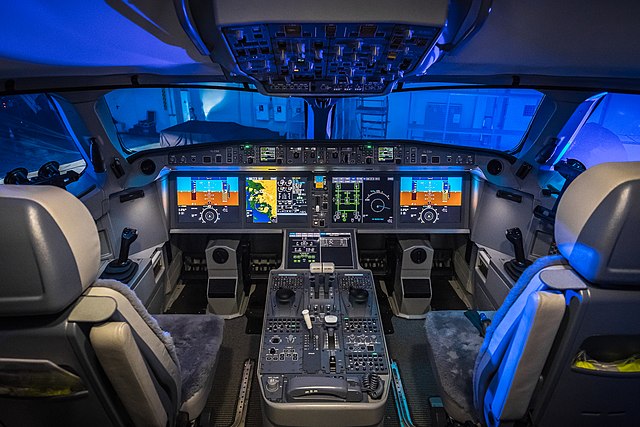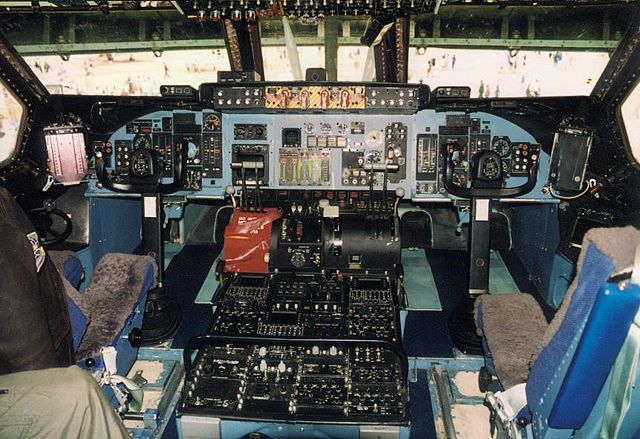A glass cockpit is an aircraft cockpit that features an array of electronic (digital) flight instrument displays, typically large LCD screens, rather than traditional analog dials and gauges. While a traditional cockpit relies on numerous mechanical gauges to display information, a glass cockpit uses several multi-function displays driven by flight management systems, that can be adjusted to display flight information as needed. This simplifies aircraft operation and navigation and allows pilots to focus only on the most pertinent information. They are also popular with airline companies as they usually eliminate the need for a flight engineer, saving costs. In recent years the technology has also become widely available in small aircraft.
Simplified glass cockpit of an Airbus A220, featuring unified LCD screens for both pilots to reduce pilot workload
Airbus A380 glass cockpit featuring "pull out keyboards and two wide computer screens on the sides for pilots"
Analog instrument panel of a C-5A
Upgraded "glass" C-5M instrument panel
A cockpit or flight deck is the area, on the front part of an aircraft or spacecraft, from which a pilot controls the aircraft.
Cockpit of an Antonov An-124
Cockpit of an A380. Most Airbus cockpits are glass cockpits featuring fly-by-wire technology.
Robin DR400
1936 de Havilland Hornet Moth. Note the bifurcated split stick control column.







